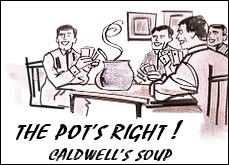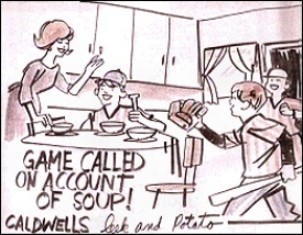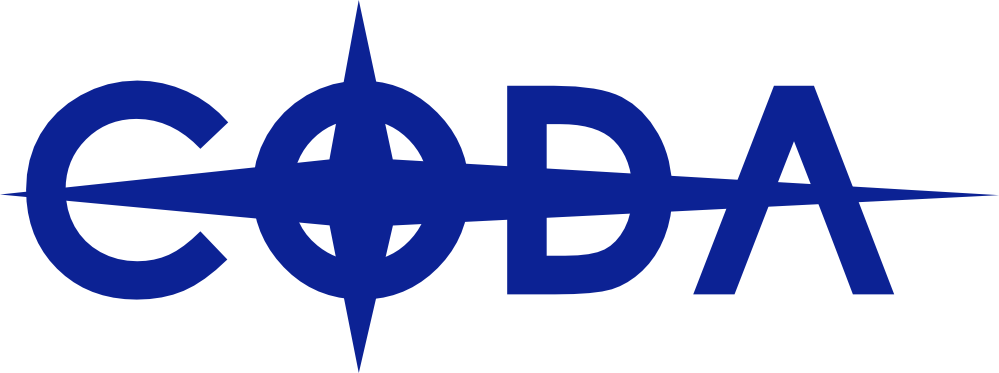Do you Need a Graphic Designer?
When you here the term Graphic Design, what do you think of?
This is important- as it can help define if you actually need one. Let's start with what a designer isn't.
It's not someone that knows how to use art based programs like Adobe Illustrator. Most designers do know how to use this software, but that isn't what makes you a designer. When I started, we used Paste-up, T Squares and Triangles, and Magic Markers. I went for quite some time before I even touched a computer. These programs are tools. They make things easier, but they don't make a designer, anymore than a hammer makes you a carpenter.
It's not someone that fulfills your vision. Or another way to put it is someone that fleshes out the design that you have in your head. A designer can do this, but that's really what might be considered a desktop publisher. “Put my logo here, and my address here. Use 10 pt. Arial font.”


So what is a graphic designer?
A graphic designer is someone that takes the rules of art and applies them to a business setting. Or another definition is creating order out of chaos. Designers spend a lot of time learning about art. Art history, art and color theory, drawing, etc. The rules are usually the same. They're based on how the brain perceives the information that is presented to it and what the best use of color, type, and layout will achieve the desired results.
Do you really need a graphic designer?
I'm a graphic designer. I've been in the sign making business, web design and desktop publishing business. And I taught. All of those have elements of graphic design to them, but you can be all of those things without being a graphic designer. If you think that you need a graphic designer, I've put on a checklist to help you know if it's what you need, or if you in fact need somebody else. Designers aren't cheap, while somebody else might be.
When you here the term Graphic Design, what do you think of?
This is important- as it can help define if you actually need one.
First, here is what designers aren't.
They aren't people that know how to use Photoshop
This also applies other art based programs like Adobe Illustrator/Draw!, InDesign, etc.
Most designers can use Photoshop (or Photopaint for us Corel lovers) and use it very well. W hen I started, we used Paste-up, T Squares and Triangles, and Magic Markers. I went for quite some time before I even touched a computer. These programs are tools. They make things easier, but being able to use Photoshop doesn't make you a designer any more than being able to use a hammer makes you a carpenter. This applies to all the other programs in our arsenal as well- Illustrator etc.
There were graphic designers long before Photoshop. They used magic markers, pens, paint, pencils and other such tools. If necessary you use could use a burnt stick. In movies, and especially old TV shows, when they show a designer they usually refer to this person as an ad man. Darren Stevens from bewitched was a good example. There was an episode where he was making ads for Caldwell Soup, and as you can see- it's done with magic markers. We aren't desktop publishers.
It's not someone that fulfills your vision. Or another way to put it is someone that fleshes out the design that you have in your head. A designer can do this, but that's really what might be considered a desktop publisher. “Put my logo here, and my address here. Use 10 pt. Arial font.”
This kind of ties into point one, but it needs a little elaboration. A Designer can usually do a desktop publisher's job, but that isn't what a designer does, technically. A desktop publisher is told to make something, and how to make it. Say, a business card. He's told “put the logo here, the name here, and the number here”, etc. And he does it. Basically, a desktop publisher is a tool for you to make what you have in mind.
You made a newsletter and want it to look better. It looks like it’s just thrown together, and you have a new client that wants to invest, but needs to see the newsletter first. You need a total redesign that reflects the rest of your company’s culture in a way that makes you look like you know what you’re doing. In this case you need a designer. A designer understands concepts like hierarchy, color relationships, and vectors. This knowledge is what you’re paying for.


So what is a designer?
A designer does design. Okay, that's overly simplistic, but it bears repeating. A designer does design. They design things. A lot of people seem to not understand this. They have a view of what a designer does without actually thinking about the words. In the case of a graphic designer, we design graphics. A graphic basically means a picture. The picture is usually used to promote something. Basically, we get a bunch of information and a goal. Then we make something based on those two things.
If you want to make the best use of the designer that you've hired, tell the designer what you want to achieve, not how you want to achieve it. For instance, let's say you want to make an ad. Don't tell the designer where to place everything, but instead ask yourself why you're making the ad. Do you want to push a certain product? Do you want to make people aware of the company? Do you want to create more appointments? Tell that to the designer. The designer will then design the ad based on what you've told them.

Here are some examples.
You have a logo that you sketched up and want someone to make it look more professional. In this case you don’t need a designer (well, you probably do, but not for what you want in this case) All the design work was done by you, and it just needs to be made on a computer. Go to Office Depot. Go to Fastsigns. That’s what they do. You don’t need a designer.
You have a business and want to develop a professional corporate identity that reflects your image. In this case you will need a designer. The designer will research your business, the name of the business, current trends, what others in the same industry as your business are doing, and develop a corporate identity.
This will include the logo, color scheme, recommended fonts, best standards and practices, and ways to use the font for best efficacy.
When paid full price I can spend as much as a month on a logo, between research and a few hundred sketches which are refined down to one.
You have a newsletter and want it published and printed. You made it in MS Word and can’t seem to get the pictures to stop being fuzzy. Again, go to a desktop publisher. Someone at staples can probably help you.
